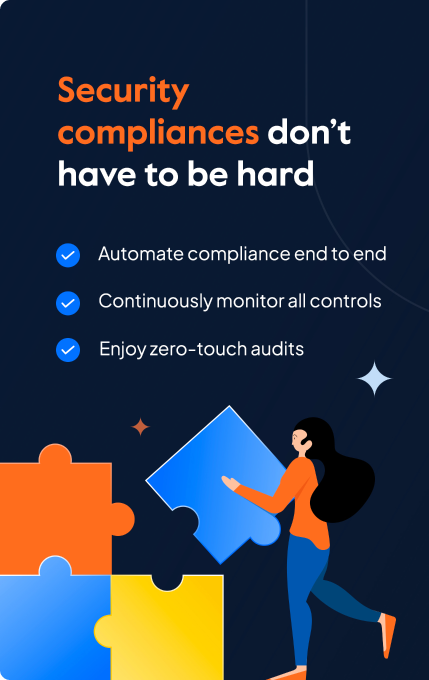Sprinto’s Privacy by Design Policy Template
A privacy by design policy template helps organizations implement a strong security-first approach by incorporating privacy measures throughout the development life cycle.

What is a privacy by design policy template?
A privacy by design policy template is a pre-designed framework that assists businesses in implementing privacy principles and considerations into product and service architecture. The goal is to minimize privacy incidents or breaches and comply with relevant data privacy standards.
Why do you need this template?
A privacy by design policy template serves as a blueprint to prioritize and embed privacy practices into operations and safeguard sensitive personal information. It helps mitigate risks related to the processing of personal data by minimizing the amount of data collected for intended purposes and proactively establishing privacy as the default setting.

Regulatory compliance
Ensure compliance with data privacy standards that increasingly require you to incorporate privacy measures in systems and processes.

Competitive advantage
Gain competitive advantage by demonstrating a commitment to data privacy and shorten the sales cycle.

Cost savings
Protect your organization against financial losses, legal liabilities, and reputational damages with a consciously developed privacy by design policy.

Enhanced security posture
Build long-term organization resilience by developing a pipeline of airtight controls and consistent security practices.
How to use the privacy by design template?

Design and customize
Customize this template according to your business context and security requirements. Be forward-thinking when applying its scope to your business.

Test your template
Validate the steps included in this template for accuracy. Test the policy template and make changes to ensure proximity to the business context.

Acquaint your workforce
Educate your workforce on the scope of the policy, their roles and responsibilities within the function it covers, and how to use it effectively.

Make improvements
Review your policy on a regular basis (ideally once every 6 to 12 months) to ensure it is up to date and aligned with industry requirements.

Leverage automation
Roll out policies, schedule security and policy training, and gain completion acknowledgements within a single interface to ensure 100% adherence.
Privacy by Design Policy Template
Get started with this template right now. It’s free

